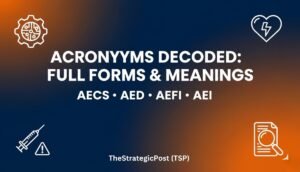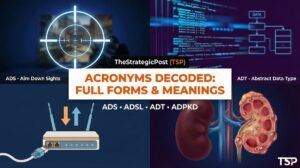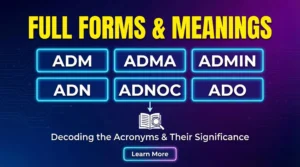- Ultimate Miami Destination Guide: Restaurants, Spas, Activities, and Experiences for Adventures with FriendsMiami Destination Guide, Imagine this: You’re wrapping up a year of virtual meetings and endless scrolls through social feeds, craving something real—tangible connections with friends amid sun-soaked horizons and vibrant energy. In 2025, as travel rebounds with a focus on mindful, immersive escapes, Miami stands out as the perfect canvas for those adventures. No more … Read more
- Retirement Trends by Generation in 2025: Are Younger Americans Actually Ahead?Written By Hassan. Date :7-12-2025 Welcome to Thestrategicpost.com, your essential guide to navigating personal finance, career pivots, and life-stage decisions with clarity and confidence. As we settle into December 2025, the retirement conversation feels more urgent than ever—with over 4.2 million Americans turning 65 this year alone, and Social Security’s solvency debates heating up ahead … Read more
- Best Botox and Fillers Locations in Miami- Dining+Experiences- New Years 2026Kickstarting Your “New Year, New You” in Miami: Glow-Ups, Gourmet Bites, and Epic NYE Vibes Best Botox and Fillers Locations in Miami : Hey there! I love the “new year, new you” angle for story—it’s all about that fresh start, blending self-care glow-ups with indulgent celebrations that feel transformative. Miami in December 2025 is the … Read more
- How to Rank a Blog Fast in 2025: Proven Strategies for Quick WinsWritten By Saad Date :7-12-2025 How to Rank a Blog Fast in 2025: Welcome to Thestrategicpost.com, your trusted hub for smart strategies on content creation, SEO, and digital growth. Here we are in December 2025, and the SEO world feels like it’s sprinting ahead—Google’s latest core update just rolled out last month, emphasizing AI-generated content … Read more
- How to Save Money Fast: Practical Strategies for 2025How to Save Money Fast : Welcome to Thestrategicpost.com, your go-to resource for actionable insights on personal finance, productivity, and building a life of intention. As we wrap up 2025, many of us are feeling the pinch from holiday spending sprees and lingering economic pressures. With the U.S. personal saving rate hovering at just 4.7% … Read more
- Mastering the Art of Watering Houseplants: A Simple Guide for Thriving GreensMastering the Art of Watering Houseplants: A Simple Guide for Thriving Greens Written By Saad Date:6/12/25 How to water plants correctly : Ah, watering plants—it’s one of those everyday tasks that sounds straightforward but can make or break your indoor jungle. Overdo it, and you’re dealing with root rot; skimp on it, and those leaves … Read more
- Should You Fertilize Garden in Winter? What Works & What to AvoidThis article is written for readers of The Strategic Post, a platform focused on simplifying home gardening care and offering homeowners clear, practical guidance on nurturing healthy and thriving gardens year-round. Written by Hassan, Date: 06/12/25 Should You Fertilize Garden in Winter?: In 2025, as home insurance premiums hit an average $1,966—a 9.3% jump from 2024 … Read more
- Does Travel Insurance Cover Flight Cancellations Due to Snow Storms? Holiday Travel 2025 TipsDoes Travel Insurance Cover Flight Cancellations Due to Snow Storms? Holiday Travel 2025 Tips This article is written for readers of The Strategic Post, a platform dedicated to simplifying travel insurance topics and providing travelers with the clarity they need for smooth holiday journeys. Written by Hassan, Date: 06/12/25 Does Travel Insurance Cover Flight Cancellations: As … Read more
- How to Prevent Mold in Winter: 10 Simple Steps for Cold-Weather HomesThis article is written for readers of The Strategic Post, a platform dedicated to simplifying practical home care and providing homeowners with clear, actionable advice for maintaining safe and healthy living environments. Written by Hassan, Date: 05/12/25 How to Prevent Mold in Winter: As 2025 winter heating bills surge 7.6% to an average $976 nationwide—driven by … Read more
- How US Winter Storms Affect Car Insurance — What to Check Before the 2025 Polar VortexUS Winter Storms Affect Car Insurance This article is written for readers of The Strategic Post, a platform built to simplify financial topics and give drivers the clarity they deserve. Written by Hassan, Date: 05/12/25 US Winter Storms Affect Car Insurance : As the 2025 polar vortex gears up for a triple-dip assault through mid-December—plunging the … Read more
- AEI, AEN, AEO, AePS, AES & AF Full Forms and Meanings — TheStrategicPost (TSP)Explore AEI, AEN, AEO, AePS, AES, and AF full forms with meanings across banking, encryption, medicine, and aviation — a complete abbreviation guide by TheStrategicPost (TSP). 🧭 Introduction From the encryption standards that secure our data and revolutionary banking systems to medical heart conditions and global aviation codes — acronyms like AES, AePS, and AF … Read more
- AECS, AED, AEFI & AEI Full Forms and Meanings — TheStrategicPost (TSP)Explore AECS, AED, AEFI, and AEI full forms with meanings across currency, healthcare, education, and technology — a complete abbreviation guide by TheStrategicPost (TSP). 🧭 Introduction From vital life-saving medical devices and global currencies to educational institutions and major policy think tanks — acronyms like AED, AECS, and AEI appear in critical documents worldwide. This … Read more
- ADV, AEB, AECC & AECS Full Forms and Meanings — TheStrategicPost (TSP)Explore ADV, AEB, AECC, and AECS full forms with meanings across military, automotive safety, space, and education — a complete abbreviation guide by TheStrategicPost (TSP). 🧭 Introduction From military vessels and railway stations to life-saving automotive technology and space exploration agencies — acronyms like ADV, AEB, and AECC represent vital systems and organizations. This TheStrategicPost … Read more
- ADT & ADV Full Forms and Meanings — TheStrategicPost (TSP)Explore ADT & ADV Full Forms with meanings across security, computing, law, and medicine — a complete abbreviation guide by TheStrategicPost (TSP). 🧭 Introduction From home security systems and military training to legal titles and programming structures — the acronyms ADT and ADV appear in vastly different contexts depending on where you look. This TheStrategicPost … Read more
- ADS, ADSL, ADT & ADPKD Full Forms and Meanings — TheStrategicPost (TSP)Explore ADS, ADSL, ADT, and ADP full forms with meanings across technology, medicine, aviation, and business — a complete abbreviation guide by TheStrategicPost (TSP). 🧭 Introduction From the high-speed connections of the early internet to modern self-driving cars and critical medical therapies — acronyms like ADS, ADSL, and ADT form the backbone of technical communication. … Read more
- 🔤 ADO, ADP, ADR & ADPKD Full Forms and Meanings — TheStrategicPost (TSP)Explore ADO, ADP, ADR, and ADPKD full forms with meanings across finance, film, medicine, and politics — a complete abbreviation guide by TheStrategicPost (TSP). 🧭 Introduction From the dubbing studios of Hollywood to the stock markets of Wall Street and the complex biology of the human kidney — acronyms like ADR and ADP define critical … Read more
- 🔤 ADO, Adobe, ADOS & ADP Full Forms and Meanings — TheStrategicPost (TSP)Explore ADO, Adobe, ADOS, and ADP full forms with meanings across transport, biology, technology, and business — a complete abbreviation guide by TheStrategicPost (TSP). 🧭 Introduction From essential biological processes that power our cells to global tech giants and international transport networks — abbreviations like ADO and ADP carry vast weight in different industries. This … Read more
- ADM, ADMA, ADMIN, ADN, ADNOC & ADO Full Forms and MeaningsADM, ADMA, ADMIN, ADN, ADNOC & ADO Full Forms and Meanings — TheStrategicPost (TSP) Global Glossary Learn the meanings of ADM, ADMA, ADMIN, ADN, ADNOC & ADO — spanning military ranks, aviation, oil & gas, telecommunications, and medicine — in this complete TSP glossary. 🎯 Introduction Abbreviations like ADM, ADNOC, and ADMA stretch across some … Read more
- ADI, ADIB, Adidas, ADIN, ADJ, ADL & ADM Full Forms and MeaningsADI, ADIB, Adidas, ADIN, ADJ, ADL & ADM Full Forms and Meanings — TheStrategicPost (TSP) Encyclopedia :Explore the full meanings of ADI, ADIB, Adidas, ADIN, ADJ, ADL, and ADM across medicine, aviation, business, and law. Learn how each abbreviation impacts its field. 🎯 Introduction From Acceptable Daily Intake (ADI) to Abu Dhabi Islamic Bank (ADIB) … Read more
- How AdSense Impressions, CPC, CTR, Clicks, and RPM Affect Your EarningsDecoding the Dashboard: How AdSense Impressions, CPC, CTR, Clicks, and RPM Affect Your Earnings Written By Saad and Thestrategicpost Team – 22/11/2025 Receiving approval for Google AdSense is a major milestone for any blogger or publisher. However, once the approval is secured, the dashboard often presents a baffling array of metrics that can lead to … Read more
- ADIB, Adidas, ADIN, ADJ, ADL & ADM Full FormsADIB, Adidas, ADIN, ADJ, ADL & ADM Full Forms and Meanings — TheStrategicPost (TSP) Global Glossary Discover the full forms and meanings of ADIB, Adidas, ADIN, ADJ, ADL & ADM — from Abu Dhabi Islamic Bank to Archer Daniels Midland. Presented by TheStrategicPost (TSP). 🎯 Introduction Abbreviations like ADIB, Adidas, and ADM dominate global markets … Read more
- Why Do I Pay $300 a Month for Car Insurance?Why Do I Pay $300 a Month for Car Insurance? Understanding the Real Reasons Behind High Premiums Why Do I Pay $300 a Month for Car Insurance?This article is written for readers of The Strategic Post, a platform built to simplify financial topics and give drivers the clarity they deserve. One of the most common … Read more
- Is The General Cheaper Than Progressive?Is The General Cheaper Than Progressive? A Clear Guide To Understanding The Differences Written By Saad 17/11/2025 Is The General cheaper than Progressive? This article is written for readers of The Strategic Post, a platform focused on practical guidance that helps people make smarter buying decisions. Today, we’re unpacking a question many drivers ask when … Read more
- Who Typically Has The Cheapest Insurance?Who Typically Has The Cheapest Insurance? A Clear Guide To How Rates Really Work Written by Saad 17/11/2025 This guide is written for readers of The Strategic Post, a platform focused on practical insights that help people make smarter financial and lifestyle decisions. Today’s topic breaks down one of the most common questions everyday consumers … Read more
- Who has best Insurance Rates in South Carolina?Who has the best Insurance Rates in SC? Written by Saad 17/11/2025 This article appears on The Strategic Post, a go-to resource for practical advice on finance and insurance matters. Today we’re focusing on insurance in South Carolina — who gets the best rates, why, and how you can position yourself for more affordable coverage … Read more
- One-Punch Man Season 3 Controversy⚔️ From Hype to Headaches: A Closer Look at the $One-Punch Man$ Season 3 Controversy and Why Blaming Bandai Namco Misses the Real Battle ⚔️ The Anatomy of a Boycott: Understanding the Frustration The internet is a powerful place. Right now, the collective anger of the One-Punch Man fandom—a passionate, loyal, and massive global audience—is … Read more
- ADDA, ADDL, ADF, ADGP, ADGPI, ADHD & ADI Full FormsADDA, ADDL, ADF, ADGP, ADGPI, ADHD & ADI Full Forms and Meanings — TheStrategicPost (TSP) Encyclopedia Explore the full forms and meanings of ADDA, ADF, ADGP, ADHD, and ADI across medicine, defense, computing, and governance in this detailed encyclopedia by TheStrategicPost (TSP). 🎯 Introduction From Application Development Frameworks and Automatic Document Feeders to Attention Deficit … Read more
- ADB, ADC, ADCA, ADCB & ADDA Full FormsADB, ADC, ADCA, ADCB & ADDA Full Forms and Meanings — TheStrategicPost (TSP) Global Glossary Learn the full meanings of ADB, ADC, ADCA, ADCB, and ADDA — from Analog to Digital Converter to Abu Dhabi Commercial Bank — in this authoritative glossary by TheStrategicPost (TSP). 🎯 Introduction From digital systems and airports to banking, biomedical … Read more
- AD, ADA, ADAC, ADAK, ADANI, ADAS & ADB Full FormsAD, ADA, ADAC, ADAK, ADANI, ADAS & ADB Full Forms and Meanings — TheStrategicPost (TSP) Global Glossary Explore the meanings of AD, ADA, ADAC, ADAK, ADANI, ADAS & ADB — from Active Directory to Asian Development Bank. Your complete abbreviation encyclopedia by TheStrategicPost (TSP). 🎯 Introduction Abbreviations define modern systems — from Active Directory in … Read more
- ACT, ACUA, ACWS & AD Full FormsACT, ACUA, ACWS & AD Full Forms and Meanings — TheStrategicPost (TSP) Global Glossary Explore the meanings of ACT, ACUA, ACWS, and AD across education, governance, religion, and science — from Australian College of Theology to Anno Domini. Compiled by TheStrategicPost (TSP). 🎯 Introduction Abbreviations like ACT, ACUA, and AD reflect a fascinating intersection of … Read more
- ACT Full Forms and MeaningsACT Full Forms and Meanings (Alliance of Concerned Teachers, Adoptive Cell Transfer & More) — TheStrategicPost (TSP) Global Glossary ACT Full Forms and Meanings: Discover the multiple meanings of ACT across education, medicine, politics, and technology — from Alliance of Concerned Teachers to Advanced Clean Trucks. Compiled by TheStrategicPost (TSP). 🎯 Introduction The abbreviation ACT … Read more
- ACP, ACPI, ACS & ACT Full FormsACP, ACPI, ACS & ACT Full Forms and Meanings — TheStrategicPost (TSP) Global Glossary Explore the meanings of ACP, ACPI, ACS, and ACT across architecture, medicine, computing, and education. A full abbreviation guide by TheStrategicPost (TSP). 🎯 Introduction From Aluminium Composite Panels in construction to Advanced Configuration and Power Interface in computers, abbreviations like ACP, … Read more
- ACH, ACID, ACLU, ACM, ACOS & ACP Full FormsACH, ACID, ACLU, ACM, ACOS & ACP Full Forms and Meanings — TheStrategicPost (TSP) Global Glossary Discover full meanings of ACH, ACID, ACLU, ACM, ACOS, and ACP across technology, science, medicine, and organizations. A global reference guide by TheStrategicPost (TSP). 🎯 Introduction Abbreviations like ACID, ACLU, and ACM have shaped the worlds of technology, law, … Read more
- ACF & ACH Full FormsACF & ACH Full Forms and Meanings — TheStrategicPost (TSP) Global Glossary Learn the complete meanings of ACF and ACH across medicine, banking, technology, and organizations. TheStrategicPost (TSP) provides a detailed abbreviation guide. 🎯 Introduction Abbreviations like ACF and ACH appear in diverse industries — from finance and healthcare to science and defense.Whether it’s the … Read more
- How to Check E-challan in Karachi🚦 Your Digital Ticket: How to Check E-challan in Karachi Online How to Check E-challan in Karachi: The landscape of traffic management in Karachi is undergoing a major digital transformation. Once defined by manual tickets and on-the-spot interactions, the city’s roads are now monitored by a sophisticated network of Safe City cameras and a robust … Read more
- ACDT, ACE, ACER & ACF Full FormsACDT, ACE, ACER & ACF Full Forms and Meanings — TheStrategicPost (TSP) Global Glossary Explore the full meanings of ACDT, ACE, ACER, and ACF across education, science, business, and government. TheStrategicPost (TSP) brings you the complete global abbreviation reference. 🎯 Introduction From Apple-certified technicians to European car manufacturers and educational research councils, abbreviations like ACDT, … Read more
- ACCP, ACD & ACDA Full Forms and MeaningsACCP, ACD & ACDA Full Forms and Meanings — TheStrategicPost (TSP) Glossary Series Learn the full meanings of ACCP, ACD, and ACDA across medicine, technology, government, and academia. A complete acronym reference guide by TheStrategicPost (TSP). 🎯 Introduction From clinical associations to telecom devices and development programs, abbreviations like ACCP, ACD, and ACDA carry immense … Read more
- ACC, ACCA, Accenture & ACCP Full FormsACC, ACCA, Accenture & ACCP Full Forms and Meanings — TheStrategicPost (TSP) Glossary Series Explore the full forms and meanings of ACC, ACCA, Accenture, and ACCP across business, accounting, religion, and education. A complete TSP glossary for students and professionals. 🎯 Introduction Abbreviations like ACC, ACCA, Accenture, and ACCP dominate conversations in business, finance, religion, … Read more
- China’s Plasma Propulsion BreakthroughChina’s Plasma Propulsion Breakthrough Ushers in a Fuel-Free Era for Aviation In a bold stride toward sustainable transportation, researchers at Wuhan University have unveiled a groundbreaking plasma-based propulsion system that could redefine air travel. Dubbed the “Tang Jet” after its lead innovator, this engine generates thrust solely from atmospheric air and electrical power—no fossil fuels, … Read more
- AC3, ACAD, ACB & ACC Full FormsAC3, ACAD, ACB & ACC Full Forms and Meanings — TheStrategicPost (TSP) Glossary Series Discover the full meanings of AC3, ACAD, ACB, and ACC across technology, business, aviation, banking, and education. A complete TSP reference for students and professionals. 🎯 Introduction Acronyms like AC3, ACAD, ACB, and ACC are used globally in computing, education, business, … Read more








































